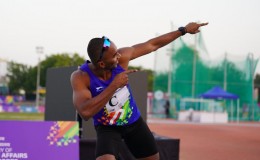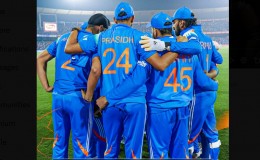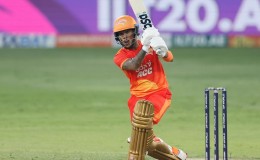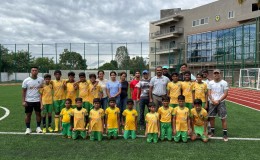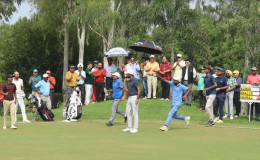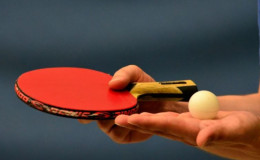If you look at them, the physical stature of some of the players playing in the tournament for sure does not match their age category in which they are participating. Country’s one of the most significant tournament at the grass-root level hockey, the Nehru Cup, has been constantly plagued by the problem of overage. A good percentage of players participating in the Nehru Hockey Cup (sub-junior and junior categories) is over prescribed age limit, but enjoys a privilege of playing with their junior mates -- courtesy to their forged date-of-birth certificates.
And this is one of the many instances of overage menace plaguing the competitions at junior level in India. Indian sports in particular have gone so deep into the vortex of this menace that it seems rather impossible to come out of it. Sportspersons trying to participate in the lower age categories only indicates the fact that our moral and ethical values have touched its nadir rather than any lack of genius or infrastructure.
Cases of forgery in age certificates have become a norm for sportspersons for the lure of participating in the meets. And more shocking, this is being done in connivance of parents, coaches, and head of institutions and most regrettably the municipal authorities empowered to prepare age certificates and at times respective associations as well.
“This is a very chronic problem in our country. The principals and the coaches verify the ages and things can easily be changed in the tribal areas where getting back to verify will take a lot of doing. We have a medical team for this specific purpose but let me be honest; no doctor can exactly pinpoint a player’s age. Probably only an X-Ray can rightly tell us about the age of a person but that will take 2-3 days and a tournament of this magnitude with so many teams and with a deadline of finishing it within 8-10 days, we cannot defer for waiting for a report,” said an official with the Nehru Cup tournament.
This malady has spread its tentacles wide and deep and is eating into the ethos of sport in India. We have often seen our country performing astonishingly well in various disciplines at international level in junior categories. But the same very sportsmen go unnoticed in the senior competition. And to everybody's guess we all know why?
Overage player with fascinating records at the junior level finds himself a mismatch at the upper level because of the stiff competition. At the same time, this trend is also affecting the morale of the young kids who play in the shadows of their overage team-mates who deprive them of the genuine chance of proving their capabilities at the right age.
It's high time the authorities at helm wake up to the ever-increasing menace and take some drastic steps to wipe out this overage evil. And one such step is to make it mandatory for all medal winners to undergo medical examination and even possibly an MRI and X-ray test. Steps can also be taken to ratify the age of an athlete. A thorough medical examination is a way out rather blind acceptance of the age proof certificate, which could be forged.
“It is a problem of great concern and we are trying everything to amend it. We follow certain norms before allowing a player to participate. We go through a detailed physical assessment, but that does not involve any medical examination. The sports ministry has introduced some new medical examinations, but that is very costly and a very lengthy process. Instead we are contemplating to pass a new rule, wherein every coach has to sign an affidavit that the players in his team fall within the said age group and a violation would lead to a penalty for the coaches and not the players, because it is the coaches and not players who are at fault. We are looking to introduce this new resolution in the under-17 age group. We did penalize some six or seven players this year who were found guilty of breaching the age limit,” said Kuku Walia, the secretary of Nehru Cup Association.
The costs might be high at times but the federation should, where the medical board is definite about a sportsperson overage, slap the expenses of the tests on the association to which the culprit belongs. The guilty must be punished and the associations concerned should also be taken to task.
In this age of computer technology the respective federation can go for a computer database on all its members from their first appearance in a recognised competition. This will help in rectification of age without hassles.
GET THE HOUSE IN RIGHT ORDER
According to a sports medicine expert, the best way to get rid of the overage menace is to make the participant undergo an MRI or an X-ray test.
"The most recent method used is the Tanner-Whitehouse (TW3) Test where we try to study 20 bones of the hand. In MRI we take into consideration only two bones. In all the methods we resort to analysing the bones of an athlete and that tells us about his approximate age. We prefer X-ray, as it is cheaper. But no verification is without an error margin, which can vary from six to twelve months," said the expert who said that age 18 is a tricky period and after that it becomes difficult to ascertain the age of a participant due to the many biological and physiological changes taking place in our body.
"We have infact thought of suggesting the various sports federations to do away with competitions like under-19 or under-21 as it becomes very difficult to verify age after 18. Infact, it’s high time the juniors are subjected to age verification when they are below 15 itself and a comprehensive data should be maintained for their future participation," he added, stating that the International football federation (FIFA) go for MRI scan of the participants while Asian Cricket Council (ACC) opts for X-ray.
"It's must to stop the malpractice of foul play. It's also a preventive step to shield the juniors from injuries as playing with overage players, increases the chance of getting hurt," he said.
By ISN


